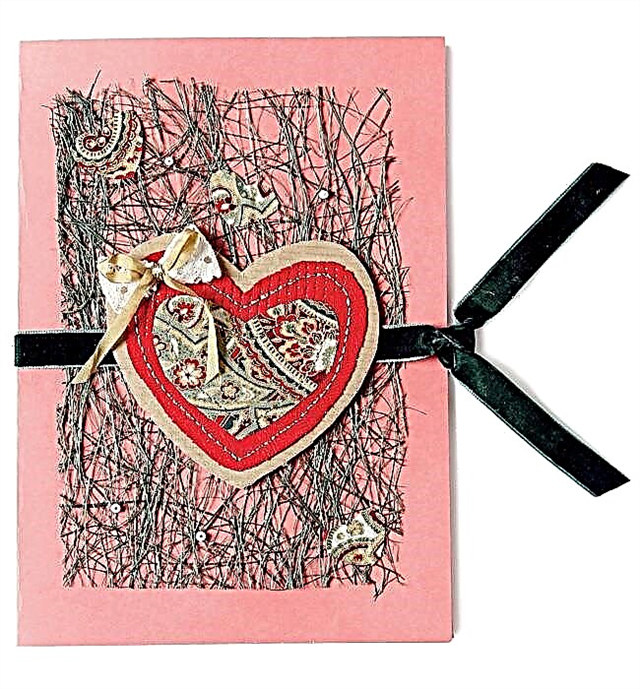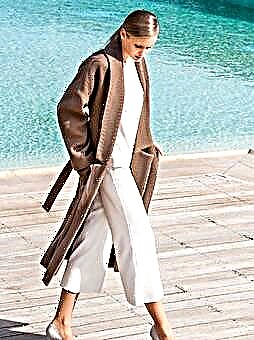Cuff - a piece of clothing that gives completeness to the sleeves. They appeared in the 12th century with the emergence of individually tailored and sewn-in sleeves.
It was the sleeves and cuffs that were one of the means of wardrobe diversity in the Middle Ages. Often they were interchangeable to minimize costs.
The length of the sleeves and the shape of the cuffs were influenced by the social position of their holder. The cuffs were richly decorated with embroidery and lace, if the owner could afford it. Sometimes they were deliberately impractical to emphasize the high status of the owner.
The cuff can be one-piece or consist of two parts: the upper and lower parts of the cuff. The cuff can be sewn into a ring or fastened with buttons. When processing the lower cut of the sleeve with the cuff, the length of the sleeve is reduced by half the width of the cuff.
In the first two parts of the master class, processing of the collar and sides of the dress was examined, the collar was sewn into the neck.
Processing of the collar, sides and cuffs of the dress with a contrast transition edging
Contrast dress dress with contrast transition piping
In conclusion, we dwell on the processing of the section of the sleeve and cuffs of the dress with a contrast transition edging.
Step 1

Cut out the details of the cuffs: 2 upper - from the main fabric, 2 lower - from the finishing fabric. The width of the allowances is 1-1.2 cm. The corners of the cuffs are slightly rounded. Duplicate both cuff parts with a thin adhesive pad.

Cut the sleeve along the line indicated on the pattern, to the required size.
Cut out a lining for edging a sleeve cut - a strip of fabric cut at an angle of 45 degrees to the warp thread, 4 cm wide. It can be cut out of the main or finishing fabric, if desired. The length of the liner is two lengths of the cut of the sleeve.
Prepare the grind for grinding: pull it off with an iron to stabilize, then equip it in width. The width of the trim should be 4 widths of the edging in the finished form (3 cm).
Step 2

The edges of the incision are laid out in a straight line, put on the facing with the inside facing in, sweep. Moreover, the allowance for the details of the sleeve narrows from 0.5 cm at the lower cut of the sleeve to 0.1-0.2 cm in the corner of the cut. Stitch from the side of the sleeve.

Iron weld seam allowances for grind.


Bend the second cut of the grind, rounding off the seam allowances of the grind, and sweep.

Fasten the bent cut of the grind, laying the machine stitch exactly in the seam of the grind. Iron.

Fold both sides of the sleeve section with the sides facing inward, and align along the lower sections of the sleeve. At the end of the cut, grind the edge to the corner.
Bend the hemline of the section of the sleeve on the front of the sleeve to the wrong side, sweep.
Sectional processing of a sleeve with a cuff
Step 3

Sweep and grind the lower seams of the sleeves 1 cm wide. Seam allowances together and iron on the back of the sleeve.

Combine the lower section of the sleeve. To do this, lay two parallel stitches with a maximum stitch width and a loose thread tension. Stretch to the desired cut length equal to the length of the cuff in the finished form.
Step 4

Cut off 0.3 cm from the upper cuff allowance along the outer edge.
To strip the hem from the lower cuff, it is necessary that the upper cuff is smaller than the lower cuff.

Fold both parts of the cuff with the sides facing inward, align the centers and side sections. Sweep the cuffs along the outer cut with hand slanting stitches from the upper cuff side, fitting the lower part in the corners.

Stitch the fit to a width of 1 cm from the outer edge of the cuff.
Note: paired parts and elements must be processed at the same time, after each operation, controlling the symmetry of dimensions, shape, location, etc.
Step 5

Grind the cuff along the outer edge of the stitch width of 0.7 cm.Run the seam from the upper cuff.

Remove basting stitch. Ironing seam allowances. Carve allowances on the details of the inner cuff to 0.2-0.3 cm. On the details of the upper cuff, leave allowances of 0.6-0.7 cm. In the places of rounding, allowances must be cut to the nearest 0.1 cm.

Unscrew the cuff on the front side, straighten it. Sweep the trim edging 0.2 cm wide from the bottom of the cuff with manual oblique stitches. Iron.
Step 6

Place notches on both transverse sides of the cuff, noting the edge width.

Sew and grind the upper cuff, focusing on the notches at the ends.

Iron the seam allowances for the seam on the cuff. Trim seam allowances (ends of oblique inlay) at an angle to avoid thickening.
Step 7

Bend the open section and outline the lower side of the cuff, overlapping the seam of the sewing by 0.1-0.2 cm.
Lay the fastening stitch on the upper cuff side exactly in the seam of the cuff stitching or to the edge, grabbing the fold of the lower cuff.
Lay the finishing line along the cuff, similar to the finishing line along the collar and sides of the dress.
Step 8

Knit loops on the cuff, sew on buttons.
Note
Other operations: sewing reliefs and processing pockets in embossed seams, sewing side seams, stitching sleeves, dress bottom processing are described in the sewing instruction for model 113 from Burda 9/2012:
- Special offer
- 1
- 2
- 3
- 4
The author of the master class and photo: Elena Lenkova

Lena has a higher and special education - a tailor of outerwear for men, women and children.
In clothes, he appreciates the individuality and thoughtfulness of the image, the originality of the cut. He likes to analyze modeling techniques and product processing technology. Leads his page on Instagram. Many people know Lena as a longtime user of the BurdaStyle.ru website.
"The quality of processing and the interior decoration of the product are integral aspects of sewing."
Material prepared by Julia Dekanova



